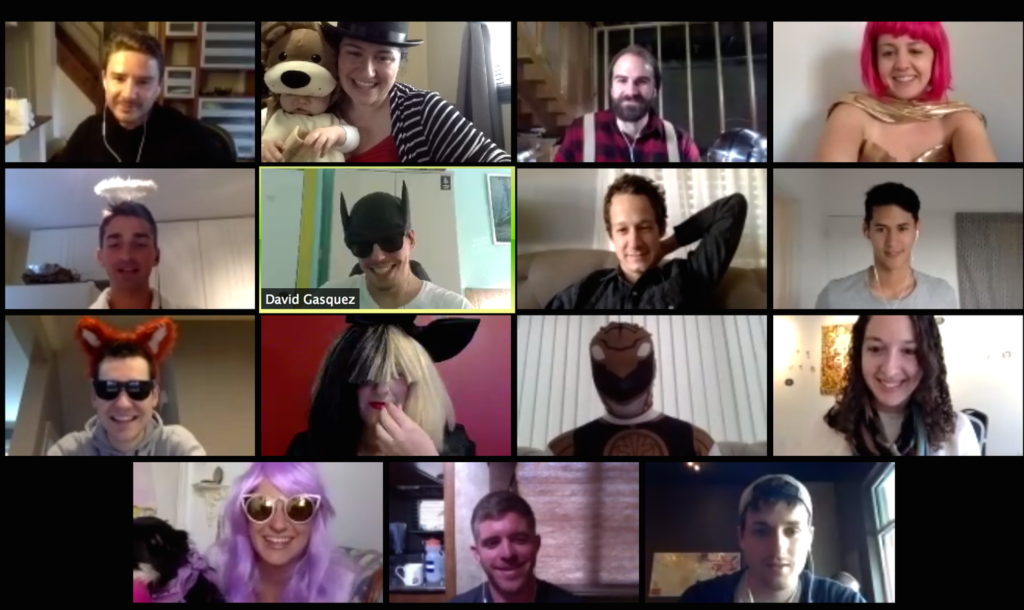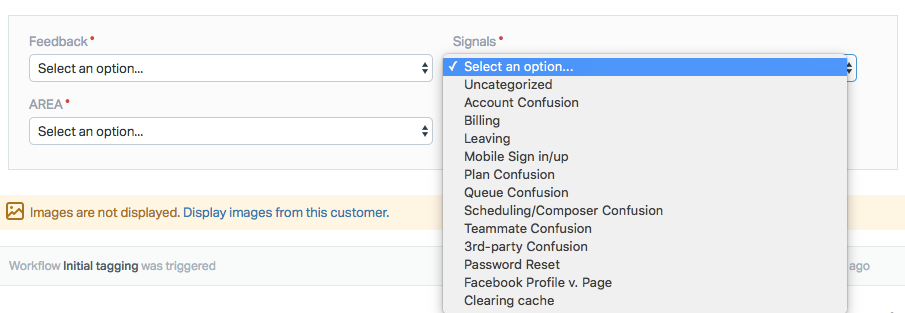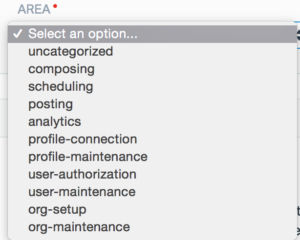
What We Learned About Customer Support From a Massive Industry-Wide Cyberattack

VP of Customer Advocacy @ Buffer
Responses within 1 hour
45% +25%
Customer satisfaction score
94 +3.3%
Email conversations
11,476 -1.9%
Twitter conversations
5140 -13.7%
Hour avg. Twitter response time
4.4 +4.7%
Onboarding Webinars hosted
8
October was an eventful month as we got geared up to celebrate Halloween. We hope you all had a fun and safe Halloween!

When a cyber attack cripples networks
A number of popular websites like Twitter and Netflix went down for some users on Friday, October 21, in a massive cyberattack with international reach.
Dyn, which manages website domains and routes internet traffic, experienced two distributed denial of service attacks on its DNS servers. This led to troubles for Buffer customers posting content to Twitter. On Friday, we saw 26,419 failed posts to twitter compared to 1,764 on Thursday.
The Happiness team has somewhat of a process in place to manage crisis situations, including notifying customers on website banners, email communications and tweets, but on the day of the attack we found ourselves disorganized and failing to deliver in this situation.
Our Happiness team leads held a “post mortem” evaluation to reflect on the incident; here are some of our observations.

We now have a downtime and incident protocol in place that will hopefully ensure we provide the best possible support during any future crisis.
Are we improving? Happiness quality audit
We constantly strive to improve our support quality. What does that really look like? How do you define it?
While we track many quantitative measures to capture the support we offer (for example, FAQ views, email reply times, resolution time, and happiness ratings), we still weren’t satisfied with our ability to properly measure the customer’s experience with us.
For this, we decided to try our first ever service and hospitality audit of our conversations with customers over email and through social media channels.
Buffer’s Chief Happiness Officer, Carolyn, experimented with this process in October to help us find a way to measure things like:
- How confident we are that the customer reaches satisfied resolution
- How effectively we address each question or underlying anxiety expressed by the customer
- Even small details like whether we spell all names correctly
The first audit Carolyn undertook led to some great lessons. We’ll be making some tweaks to our use of snippets—small, pre-written pieces of text we can use for common questions— and automated follow ups. We’re also keen to have more conversations about communicating empathy and care through the written word in emails and tweets.
Audits will likely become part of our process moving forward. We’ll establish a baseline for a quality score and also continue to learn and improve our output through training. We’re excited to share more of the results and process as it evolves!
New data systems to raise the bar
We see more than 10,000 emails every month, and there’s tons of data packed into each individual one—which is why tagging and properly categorizing each email allows us to better pull that data later on. For our Happiness Heroes, remembering to tag each email was difficult and a mental burden at times: knowing which tags to use, how many of them to use and more!
Because we greatly value learning as much as we can from our customers and each interaction, fixing this was a high priority for our team.
We introduced a new feature in late September for our email management system, HelpScout, called “custom fields” for better categorizing on our support tickets, we’re keen to continue to iterate on this process and learn as much as we possibly can to improve the product and customer experience. The custom fields feature provides a road block before each hero sends an email, reducing the strain of remembering and allowing each email to be dropped into the proper category for later data evaluation.

After chatting to our Chief Technical Officer, Sunil, and our product managers, we decided to also introduce area categories to the mix.
This addition enables us to track more closely how many tickets that came in per area in the product (such as composing, scheduling, analytics, etc) and it would ease the process for product managers and engineers to jump in and have a closer look at the health of the product.

The second part of this is the move towards service level objectives, which set goals and expectations between product/engineering and customer support.
We’ll set goals around the levels of quality of every new feature that’s released, measured by the number of tickets we receive in that area. We will try to reach those goals and agree to pause development on other (new) areas and refocus attention on problem areas if need be.
By tracking the Custom Fields metics in HelpScout and setting a base level in the coming weeks, we’re hoping to have much closer communication around product quality and set a bar for new releases.
We have started working on new reporting for these metrics that will incorporate not only numbers but also qualitative intuition from our Happiness team around the top categories.
Some great lessons from October in signals include:

What we do with those tough tickets (and team-wide training!)
Since Adam became our Tier 2 Hero, he’s been working closely with our Happiness Engineer/Magician, Colin, to take over our toughest tickets and the process around this.
Adam has put in place an escalation process for those tricky tickets and also gives an update on quality (bug status and fixes) in one of our twice-a-week All Happiness Hands meetings. This has been an awesome way to re-focus on technical training within the team. In addition, Adam has initiated a few training resources that include how we use Trello with our engineering team and how Instagram analytics works with Buffer.
We are continuing to focus on education across the team and the product.
Moving mobile tickets back to the whole team
We’ve experimented many times on how best to distribute support tickets (by area, plans and so forth.) Since June, Daniel has been our sole hero focused on tickets that come from our iOS and Android apps.
We have learned a lot by having one hero getting deep knowledge around the customer experience and interacting with the engineers in this very specific arena.
However, after our Instagram launch and being featured in the app store (which has led to an awesome increase in mobile users!) the amount of support emails doubled (1,016 emails in October 2016 compared to 466 in June 2016), causing a bit too much of a strain on Daniel.
All mobile tickets now go directly to the main support inbox (rather than being filtered out), and our heroes can now escalate trickier tickets to Daniel. Daniel also put together a great training resource for the Happiness team to ease the transition. We’re hoping to cut down response times and improve the support experience overall for our mobile customers.
Over to you!
Were you or your business affected by the Dyn cyberattack in October? Were there any areas in the report that stood out to you? We’d love to hear from you in the comments!
Check out other reports from October:
Try Buffer for free
180,000+ creators, small businesses, and marketers use Buffer to grow their audiences every month.
Related Articles

Note: This is the quarterly update sent to Buffer shareholders, with a bit of added information for context. We share these updates transparently as a part of our ‘default to transparency ’ value. See all of our revenue on our public revenue dashboard and see all of our reports and updates here . It's been quite the y

Editor’s Note: Thanks for checking out this post! We’ve released our updated 2021 pay analysis here. You can’t improve something if you don’t know that it needs to be improved. That was very true for us four years ago when we first started looking into equal pay at Buffer. We have long used a salary formula to determine all of our salaries – the same role in the same part of the world receives the same salary. That m

Ever since the world got turned upside down by COVID-19, it’s been “business as unusual” for everyone – Buffer included. I sent this update out to Buffer’s investors one week ago. I hesitated on whether to share it more widely, as I know a lot of companies have been impacted more severely in these times. That said, I believe it makes sense to lean into our company value of transparency, since there may be some companies this could help, and it shows Buffer customers that we will be around beyon
